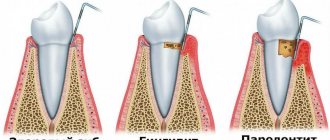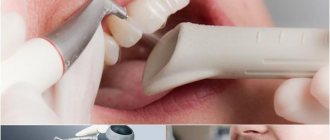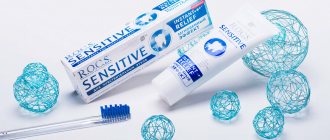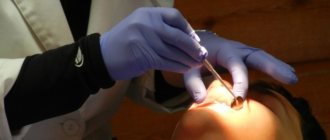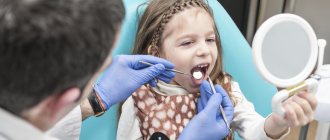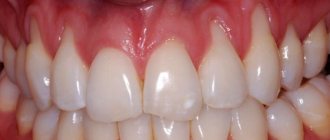A useful article on how to use calamus root for teeth correctly. What healing properties does it have, how to prepare a tincture and decoction, how to rinse your teeth, possible harm and contraindications.
Everyone knows that dental health cannot be neglected, since toothache is unbearable.
The first rule of a beautiful smile is regular visits to the dental office. But there are other preventive measures - calamus root for teeth.
The amazing properties of this plant will help you avoid frequent visits to the dentist.
Calamus root for teeth - recipes for use
AirAir is a genus of perennial evergreen herbaceous plants from the monotypic family Calamus, or Calamus.
Previously, this family was considered as a subfamily of Lat. Acoroideae of the Araceae family. Wikipedia Calamus has long been known as a plant used in medicine. This perennial got its name by living in lowlands, swamps and on the banks of reservoirs.
It has spongy, thick roots that can crawl and spread, having many adventitious roots.
It is the rhizome, and not the grass of the plant, that is used for medicinal purposes, both in folk and traditional medicine.
Chemical composition of calamus root
Calamus root is rich in a high content of valuable natural components:
- complex essential oils
- tannins,
- phytoncides,
- starch,
- organic acids,
- tannins,
- resins,
- vitamins,
- micro- and macroelements
How to prepare calamus root?
Collection of medicinal root is recommended at the end of August and beginning of September.
It must be processed by washing with running water and cut into 20 cm pieces. This material must be dried in the shade, cleaned and finally dried in a shelter to avoid direct sun.
Medicinal properties of calamus root
The disinfecting properties of calamus were known to the ancients:
powder based on it was sprinkled on purulent ulcers and wounds, and during the invasion of mass fatal diseases such as typhoid and cholera, the root was chewed.
This method of treatment is still relevant today - it is used for sore throat or viruses.
But the purpose of this article is to tell you how calamus root is used for teeth.
Useful properties of calamus - video
Useful properties of the composition for dental treatment
The tincture is effective due to the components it contains. Calamus is an evergreen herbaceous plant with pronounced disinfectant properties. The roots are used as medicinal raw materials. They contain vitamins, microelements, fatty acids, antioxidants, tannins, and essential oils.
Even in ancient times, crushed rhizomes were used to treat purulent wounds and ulcers on the body. Today, calamus is deservedly considered one of the best plants for the prevention and treatment of oral diseases, since:
- has an astringent, disinfecting, anti-inflammatory effect;
- effectively heals ulcers and wounds that appear due to stomatitis;
- relieves bad breath, strengthens teeth during periodontitis;
- eliminates bleeding gums.
The property of calamus is known to be “sealing” the tooth. Regular use of tincture or powder stops the carious process.
Propolis is a traditional beekeeping product. It is rich in flavonoids, resins, tannins, aromatic acids, minerals, enzymes, vitamins A, E, C.
Propolis is actively used to treat wounds, ulcers, and prevent many skin diseases. Bee products are good for teeth because:
- soothes, relieves inflammation and pain;
- reduces sensitivity;
- accelerates the healing of damaged gums;
- destroys germs and prevents the spread of infection;
- removes pus.
Calamus root - dental healer
Naturally antiseptic, calamus is considered the best plant for teeth and gums.
- It neutralizes harmful microorganisms and has a strong astringent effect, thereby helping to relieve the inflammatory process.
- Calamus can also cope with stomatitis - powder from the root of the plant is sprinkled on wounds and ulcers in the oral cavity.
- In addition, it perfectly removes such an undesirable phenomenon as bad breath.
- Both calamus root powder and tinctures based on it are used, which are used to treat periodontal disease, as well as for a general strengthening effect on the gums and tooth enamel.
A well-known expert in alternative medicine, Bolotov, advised mixing calamus root and propolis for rinsing.
Why not try it, because there will definitely be no harm from such a practice if there are no general contraindications to the use of the plant.
Editor's comment
I would like to say the following on my own behalf. The tincture is quite hot, you need to be patient a little at the beginning of rinsing.
Instead of preparing propolis tincture, I use a ready-made one from a pharmacy (30-50 rubles per bottle).
I use two 25 ml bottles per 0.5 liter of tincture of calamus rhizomes. I first strain the tincture from the roots and mix everything together. I think it's not critical. Although, it is probably preferable to prepare propolis tincture yourself.
As for the growth of new teeth, of course, it’s hard to believe, but to strengthen the health of teeth, the teeth themselves can be very suitable.
I recommend using tinctures when a tooth hurts and for prevention.
If you make powder from eggshells, first remove the thin film from them. Otherwise, it will go rotten and will smell unpleasant for some time. By the way, I read that it is recommended to use the powder with a small amount of lemon juice for better absorption.
calamus root for dental treatment - recipes
Calamus root infusion for teeth
To prepare an infusion of the plant root, pour two teaspoons of dry crushed raw materials into one glass of boiling water, cover and leave to infuse for about 10-12 hours.
Then the composition is filtered and you can rinse your mouth with it several times a day.
Tincture of calamus root with the addition of propolis
First you need to purchase a package of dry calamus roots (standard pharmacy packaging 40 g), 20 g of propolis (can be bought on the market), 1 liter of vodka.
So, all the ingredients are ready, which means you can start preparing two healing tinctures:
Take 500 ml of 40 proof vodka and half a glass of calamus root. Leave the soaked dried roots for about 7 days. Pour 20 g of propolis with the same amount of vodka and leave for the same amount of time for 7 days. To make propolis easier to crumble, keep it in the freezer for half an hour.
Both medicinal compositions will be ready in about a week so that they can be used simultaneously, as intended.
Surprisingly, some sources claim that rinsing with such a mixture helps not only restore the health of the entire oral cavity, but also restore teeth.
Of course, alcohol tincture of propolis is sold in pharmacies, but its quality is much inferior to that prepared by hand. But here it is important not to buy a fake.
You can check this in the following way: pure propolis should sink in water, and if it floats, it means there is a lot of wax in it.
About the causes of caries
Caries is the most common dental disease - bone tissue is destroyed and becomes soft, cavities form. The disease is a consequence of an unbalanced diet. Caries causes:
- Deficiency of phosphorus, potassium and protein;
- Excess sugar;
- Pathogenic microbes that multiply quickly in an acidic environment.
- Don't give germs a chance:
- Sweet foods should not be consumed frequently;
- You need to brush your teeth and gums properly;
- Rinse your mouth regularly;
- There should be no pieces of food left between the teeth.
How to rinse teeth with calamus preparations?
Using prepared tinctures involves rinsing, but not with a pure composition, but with a solution.
For direct use, mix:
Instructions for use
- 1 tablespoon of vodka calamus tincture
- 1 teaspoon propolis
- small amount of water
You can do without water, but it will burn a little, and with the addition of water the amount of liquid is greater, which is more convenient for the procedure.
Rinsing should be active and last at least two minutes, longer if possible.
The mixture must be spat out, as it is not for internal use. In addition, during the process of passing through the oral cavity, all the microbes accumulated in the liquid.
You can rinse before bed, as well as during pain in the teeth - the composition has an analgesic effect.
It is thanks to alcohol that calamus root for teeth penetrates deeply and relieves pain, and propolis also fills small cracks. Those who use this on themselves say that toothache is gone forever.
Even more, there is a unique restoration of damaged roots, enamel and tooth performance.
To see results faster, you can use ground egg powder and other calcium supplements internally. This is done once a day during meals.
You can also add calamus powder to your teeth cleaning composition.
You can learn how to use calamus to treat gums from this article.
What causes aching pain in a tooth?
The main causes of pain are:
- Infectious lesions of dental units: caries, pulpitis, periodontitis. Even in the later stages, these diseases may not give a clearly defined clinical picture and may only manifest as persistent aching pain inside the tooth when exposed to any irritant.
- Too thin enamel layer, cracks and chips in the enamel.
- Periodontitis. In some cases, gum inflammation is accompanied by throbbing toothache.
- Treatment or tooth extraction in Novokuibyshevsk. Aching pain often appears after the removal of a wisdom tooth or any other tooth - this is a normal reaction to the operation, and usually the painful sensations gradually go away on their own after a few days. Also, aching pain in the tooth often occurs after removal of the nerve - this is a common reaction of the body to treatment and does not require special therapy.
Contraindications and precautions
Medicines prepared on the basis of calamus root are not recommended for people diagnosed with hypotension, stomach ulcers, or in the presence of constant bleeding. Also, pregnant and lactating women should not use calamus root tincture. The leaves and roots of calamus have increased biological activity, and before use, experts advise consulting with a therapist.
Components of the tincture, such as calamus and propolis, can be allergens, especially bee products. You can test the tincture on the crook of your elbow. Apply and wait 15 minutes, if nothing happens, then you can safely use the medicine.
Contraindications for use
With all the variety of beneficial properties of propolis, which are actively used in dentistry, the use of products based on it also has its contraindications, which must be taken into account before starting treatment.
Important! First of all, it is necessary to pay attention to whether a person is allergic to other bee products, since in this case it is better to avoid using propolis. In addition, allergic reactions or even individual intolerance to the components that make up bee glue may occur.
And although the likelihood of their manifestation when used externally is not so high, it is better not to risk it and replace propolis with other natural remedies with similar properties.
An aqueous solution of propolis has antimicrobial and antibacterial effects and has important therapeutic value.
And a few more important points When starting dental treatment with propolis, it is worth knowing in advance the answers to some questions that often arise when using this substance:
- The use of propolis and products based on it does not have a negative effect on teeth and is harmless to enamel (of course, provided that the person is not allergic to bee glue).
- Using propolis tincture, you cannot kill the dental nerve, because it is very tenacious and most often there is no direct access to it, except in cases where it is exposed due to damage in the body of the tooth. Products based on bee glue can only soothe the irritated nerve for a certain period of time, but after that it is still advisable to seek help from a dentist.
- Propolis-based products in the treatment of dental cysts can only be part of a complex therapy, which must be carried out under the supervision of a dentist. This is due to the seriousness of the disease itself, which can often only be treated surgically. Therefore, the use of propolis alone, despite its inherent antibacterial and anti-inflammatory properties, may not be sufficient in this case.
Tooth cyst - what is it?
A dental cyst is a cavity formation. What does a dental cyst look like: it is a sac with liquid or a pasty substance. The walls of the cyst are formed by a layer of epithelial tissue. Inside the cyst there is pus, dead cells and bacteria.
The roots of the teeth of the upper jaw have a more porous structure, so the inflammatory process of cysts in the apex of the roots in this case proceeds faster and more intensely.
A cyst on the root of a tooth can be of different sizes - from 5 mm to several cm. The cause of the formation of a “purulent sac” is always an infectious process, and it, in turn, can be provoked by a number of factors.
Information about calamus
Common calamus (from Latin Ácorus cálamus) is also called marsh or reed calamus. Belongs to the perennial calamus family. The plant can be found near coastal waters and swamps. Grows on a massive scale in Southeast Asia, North America, Russia, and Europe. In our country, calamus can most often be found in Southern Siberia, the Far East and the European part.
According to scientists, the homeland of calamus is China and India. But since ancient times, thanks to man, the plant was known throughout Asia. The spread of this species was determined by the fact that it grows on the banks of reservoirs, the water of which is suitable for drinking. Therefore, nomadic tribes, traveling, scattered rhizomes by overcoming water and swampy barriers.
The plant came to Russia in the 12th-13th centuries. It was brought by Tatar tribes. They were sure that calamus roots purify water in reservoirs, which becomes suitable for consumption. In order to drink water from an unknown river, the Tatars always carried a calamus root with them and added it to their drink. Calamus has a subtle spicy aroma. It was used as a replacement for bay leaf, cinnamon, and ginger root. The root is used in medicine.
Conservative treatment of dental cysts
A dental cyst can be cured using conservative methods - but this is only relevant for those cases when the disease was diagnosed in the early stages and the size of the formation does not exceed 1 cm. An important condition is the patency of the root canals, since it is through them that drug treatment is carried out. It is worth noting that the conservative method is used more often in young patients.
The main goal of conservative therapy is to eliminate the inflammatory process. It is carried out in several stages:
- Gaining access to the root canals - removing tissue softened by caries or an old filling, studying the patency of the canals, their direction and length. To do this, the dentist inserts small instruments into the canals and takes an x-ray - this allows you to clearly assess the condition of the tissues. Afterwards, the canals are processed mechanically - using tools, and, if necessary, expanded.
- Medicinal treatment of the canals with antiseptic agents - rinsing with Chlorhexidine and sodium hypochlorite.
- Opening of the apical foramen and removal of antibacterial drugs beyond it, into the cyst. To neutralize the acidic environment of the cyst, highly alkaline drugs are used - usually calcium hydroxide. It helps to destroy the walls of the cyst, destroy pathogenic bacteria, protect bone tissue, and accelerate healing.
- If necessary, the application of the drug is repeated - as many times as necessary to stop the inflammatory process.
- Temporary canal filling. It is carried out after the doctor is convinced of the effectiveness of therapy and the absence of disease. The canals are filled temporarily for the purpose of further monitoring the condition of the tooth - if, according to the results of a subsequent assessment of the condition of the tissues, inflammation is not observed, the canals are filled with permanent material.
Next, it is important to visit the doctor according to the schedule, since it is necessary to assess the dynamics of bone tissue restoration.
Physiotherapy can also be added to the main course of therapy. Relatively recently, depophoresis began to be widely used - it allows you to eliminate infectious processes in the canals of the root system. This method consists of using copper-calcium hydroxide - the affected tissue is exposed to a weak electric current, which promotes deep penetration of the drug. Often three sessions are enough to completely eliminate the disease.
About the treatment of cysts and granulomas
In the dental life of patients, situations sometimes arise when the question arises: should we save the tooth or remove it? As a rule, such teeth have already been treated once in the distant Soviet or not very distant Russian past. And on such teeth, as patients say, a “cyst” has grown. Let's figure out what it is and where it comes from.
The word “cyst” hides a chronic inflammatory process. The main reason for the appearance of this inflammatory process is poorly treated or not treated on time root canals.
These pictures show a tooth that was treated poorly. The tooth has no pulp, white stripes are visible - these are traces of filling material, there is an empty, unpassed part of the canal (marked with a blue dotted line) and that very “cyst” - chronic inflammation, granuloma (the area is highlighted in red).
And this is another option: the tooth “dies” asymptomatically or with pain of varying intensity; in the absence of timely diagnosis and treatment, pulpitis turns into periodontitis and chronic inflammation develops.
In both cases, the neurovascular bundle (pulp) is no longer present in the tooth canals, but the space of this canal is not filled with anything else or is filled poorly, with pores and voids and not to its full length. But nature does not tolerate emptiness. If, instead of the nerve, the canals are not filled with filling material efficiently, then this space will be filled with bacteria, which causes this inflammation. And their living environment is the most luxurious: the remains of pulp, blood, lymph, warmth and humidity - all inclusive. And naturally there are more and more bacteria. Sometimes such teeth can begin to bother, ache and ache with calls for help, but if the immune system copes, the inflammation slowly grows for many years, unnoticed by anyone.
It seems like why treat a tooth if it doesn’t hurt? But inflammation has not gone away and bacteria have their completely unhelpful effect on the body. A fistula tract (“bump” on the gum) may form, through which purulent discharge will flow out from time to time. I don’t think there’s any need to explain how unhelpful pus is. In addition, there are different sinuses on the upper jaw, in particular the maxillary sinus, and if a tooth is located next to this sinus, the products of bacterial life get there too, causing odontogenic (this means from the teeth) sinusitis. And for patients, for example, with infective endocarditis (inflammation of the membranes of the heart), sanitizing the oral cavity is a very important point, since the cause of development is bacteria that enter the bloodstream and settle on the valves and membranes; these bacteria are very often bacteria from chronic lesions oral cavity.
To summarize, the main meaning of all of the above is that if your teeth don’t hurt, this does not mean that nothing needs to be treated. A dental examination every 5-6 months is prescribed in order to identify problems in the early stages, but this is a topic of prevention.
Let's return to the treatment of granulomas and consider a specific example:
Its background is as follows: tooth 3.6 was treated for pulpitis about five years ago and, despite the large focus of inflammation, did not bother the patient in any way, it was discovered on a panoramic orthopantomogram (a photograph of all teeth). There was no talk of removal; the patient never wanted to part with her tooth.
The white stripes in the picture are filling material; they are thin and intermittent and do not reach the top of the root. This means that the root canal system was not sufficiently prepared and expanded to remove all organic debris from it. Blue stripes are emptiness, with a warehouse of all sorts of goodies for bacteria.
The granuloma is outlined in red.
We have already talked about the general principles of root canal treatment, so we will consider the course of treatment.
Firstly, our task is to mechanically process the root canals, go through those areas that were not processed (blue stripes on the x-ray above) and find missed empty canals, if any.
Secondly, it is necessary to expand the root canals so that the solutions with which we wash the canals have their effect throughout the canal, dissolving the nutrient organic environment of bacteria.
Thirdly, it is necessary to ensure that all old infected material is removed from the canals as much as possible.
In this picture, the white stripes are a control picture with instruments after mechanical and medicinal treatment. The canals are passed, processed and expanded to their entire length.
At the next visit, the tooth is obturated (sealed) permanently. The treatment took two visits of 1.5 hours and 1 hour. The patient came for a follow-up examination three months later.
And here is the picture and we see a significant improvement in the situation, the “cyst” has almost healed, only minor changes remain, which, no doubt, will disappear. The patient is scheduled for a follow-up examination in another 3 months, where we expect to see complete recovery of the tooth. As we wrote earlier in a note about the general principles of root canal treatment, the treatment will continue and the tooth will be hermetically restored with an inlay or crown.
But there is an important nuance - treatment of such teeth is never 100% successful. The absolutely predictable result is only removal. The success rate of root canal retreatment over a five-year period is about 70-80%, and implantation success is 95-97%. Therefore, it is always necessary to evaluate all the risks in attempts to save teeth. To treat or not to treat is a decision made only by the patient. Just remember: the best implant is your tooth)
It is very important to note that modern standards of treatment for teeth with chronic inflammatory processes imply a minimum number of visits. But there are outdated methods of treatment, which, unfortunately, are still used to this day. The tooth canals begin to be “pickled” with various medicines, healing pastes, iodine and other various healing substances are put there. And then all this is changed according to a scheme, and each doctor has his own scheme - after 7 months, after 6 months, after 3 months, as you like. And the patient must walk like this for six months to a year, and the doctor observes in the pictures how the cyst “goes away.” And there are also those who like to “treat cysts”, releasing the same wonderful drugs directly into the bone, into the inflammatory focus, just to be sure.
This is absolutely pointless and this approach, at a minimum, forces you to spend more money and more time, and at maximum, it can cause harm. The tooth is closed with a temporary filling, which over time becomes leaky, collects plaque and lets saliva along with this plaque into the canals and can cause re-infection of the canals, also the temporary filling does not withstand heavy chewing loads and the walls of the tooth can simply break, which will lead to to removal, well, drugs released in large quantities into the bone add unnecessary work to your body’s immune system. If you were offered something similar, you can safely leave and you won’t go wrong.
Of course, this does not mean that the canals are never temporarily filled. There is a quote from well-known dental gurus Rinaldo Mattar and Affonso Bernardes: “You can convince anyone to do endodontic treatment in one visit, it’s harder to convince germs to die in two hours.” Sometimes temporary medicinal investment in the canals is necessary and justified, but they mainly use aqueous calcium preparations, without iodine and all sorts of impurities, left in the canals for a short time (2-3 weeks), and then they are filled permanently, without waiting for the “cyst to go away.” ” and without changing this calcium throughout the year. And especially without bringing it to the source of inflammation in the bone.
They use outdated methods due to a lack of understanding of the inflammation process. Granuloma is not a cause, it is an EFFECT. And the REASON is bacteria that live in the canals and affect the patient’s body with the products of their vital activity, and the body tries to “fence off” these bacteria and forms a response - a granuloma. This focus of inflammation is the battlefield of your immunity with the bacteria of the canal, and therefore, it is pointless to remove kilograms of miracle remedies there. It is necessary to eliminate the cause, and not influence the effect.
The doctor can eliminate the cause only with the help of a modern protocol. And all this in a minimum number of visits.
Further restoration of the tooth is very important in treatment. After all, it is necessary not only to eliminate the inflammation, but also to chew with this tooth in the future. The fact is that to restore a tooth with an inlay or a crown, you need tooth tissue; there may be few of them, just a few millimeters above the gum, but they must be there. This allows you to do high-quality and airtight work for many years. And if it is impossible to restore chewing function, the tooth must be removed.
As an example, a decayed tooth. The preserved wall of the tooth is marked in red, and it seems not even a few millimeters, but blue marks the area where the hard tissues have already been destroyed below the gum level; it is impossible to restore such a tooth qualitatively and for a long time.
And one last addition: treatment of such teeth is NEVER 100% successful and there is no 100% guarantee. The absolutely predictable result is only removal. The success rate of root canal retreatment over a five-year period is about 70-80%, and implantation success is 95-97%. Therefore, it is always necessary to evaluate all the risks in attempts to save teeth. To treat or not to treat is a decision made only by the patient. There is another point here: the best implant is your own tooth.
Is it possible to strengthen teeth with folk remedies?
Folk remedies do not replace professional treatment, but complement therapy well.
- Infusion of linden flowers (dry) and soda. The infusion is carried out for 5 hours in cold water, used for rinsing, and has a preventive effect.
- A mixture of honey and salt is rubbed into the gums for periodontal disease.
- Corn porridge for breakfast - a composition rich in valuable components will help maintain dental health.
- Honey and rose oil as a teeth lubricant. Course – 10 days. After a break, you can repeat the effect.
- A decoction of a mixture of medicinal herbs (crushed) is used to rinse teeth.
- Cleaning teeth with propolis.
- Rinse with sea salt solution every night. After the procedure, you should not eat.
Surgical treatment of dental cyst
What is dangerous about a cyst in the gum above a tooth is that it requires surgical intervention if you do not see a doctor in time.
It is indicated for cysts larger than 1 cm, as well as in other cases:
- obstruction of root canals, their complex structure;
- presence of a tooth crown;
- presence of a pin in the root canal;
- impossibility of saving the tooth due to its severe destruction.
There are several methods of surgical treatment - the doctor chooses one of them, based on information about the patient’s age, individual characteristics of the structure of the patient’s dental system, the size of the cyst, and the degree of tissue damage.

